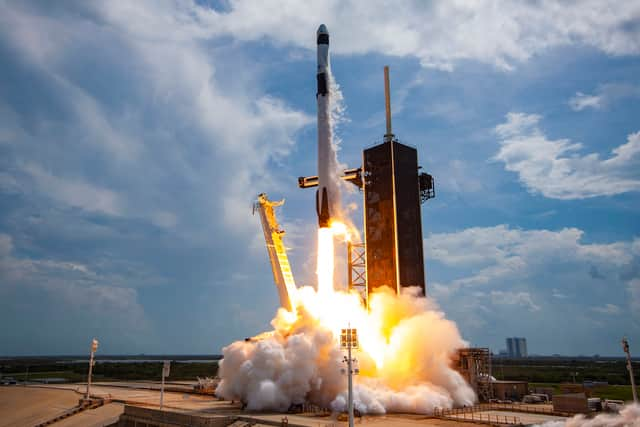SpaceX: Elon Musk's rockets puncture 'temporary' holes in the ionosphere - will it affect the planet?
and live on Freeview channel 276
SpaceX is constantly punching holes in the ionosphere and leaving bright red aurora-like formations in the sky when they send their rockets into space, and scientists are saying this could cause problems for astronomy and communication.
Scientists said the impact of the formations through SpaceX launches is still being evaluated as they leave “red, roughly spherical, and visible to the naked eye for as much as 10 minutes at a time,” pattern in the sky according to Spaceweather.com.
Advertisement
Hide AdAdvertisement
Hide AdBut what does it mean to punch a hole in the ionosphere, and can it damage the planet? Here's what you need to know.


What is Falcon 9?
SpaceX claims Falcon9 is the world's first reusable orbital rocket, and its first launch was in June 2010.
A decade later, the partially reusable rocket became the first commercial rocket to launch humans into orbit, and the only US rocket certified for transporting humans to the International Space Station.
The rocket has two stages; the first (booster) stage carries the second stage and payload to a pre-determined altitude. Then the second stage lifts the payload to its final destination. The booster is capable of landing vertically, which allows it to be reused - which was first achieved on flight 20 in December 2015. As of 24 July 2023, SpaceX has successfully landed boosters 209 times.
The punctures
Advertisement
Hide AdAdvertisement
Hide AdOn 19 July, Falcon 9 was once again sent to space on a Starlink mission, tasked to launch 15 Starlink satellites to low Earth orbit. Starlink is a SpaceX company which provides satellite internet access coverage to over 56 countries.
As the rocket launched, it trailed a bright exhaust plume, but according to SpaceWeatherarchive.com, there was something extra spotted by photographer Jeremy Perez.
Mr Perez, who was at the San Francisco Volcanic Field north of Flagstaff, said: “After the rocket passed overhead, a red fluorescent glow expanded southward and crossed over the Milky Way. It was visible for almost 20 minutes.”
The red glow is a sign the rocket punctured a hole in the ionosphere. Space physicist Jeff Baumgardner from Boston University told the site: "This is a well-studied phenomenon when rockets are burning their engines 200 to 300 km above Earth's surface. I reviewed footage from the July 19th launch. It shows the second stage engine burning at 286 km near the F-region peak for that time of day. So, it is quite possible that an ionospheric 'hole' was made".
Advertisement
Hide AdAdvertisement
Hide AdIn September, a US Space Force rocket launch caused an ionospheric hole above California, causing the sky to glow with a faint red hue.
Can a hole in the ionosphere affect the planet?
The ionosphere stretches roughly 50 to 400 miles above the Earth's surface, which is right at the edge of space. Along with the neutral upper atmosphere, the ionosphere forms the boundary between Earth's lower atmosphere — where we live and breathe — and the vacuum of space.
This section of the atmosphere is also where many Earth-orbiting satellites hang out, including the International Space Station, so any disturbances there can disrupt signals in navigation systems, such as radio and GPS signals.
Comment Guidelines
National World encourages reader discussion on our stories. User feedback, insights and back-and-forth exchanges add a rich layer of context to reporting. Please review our Community Guidelines before commenting.
